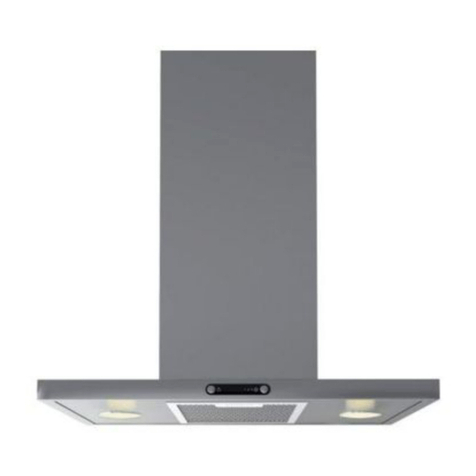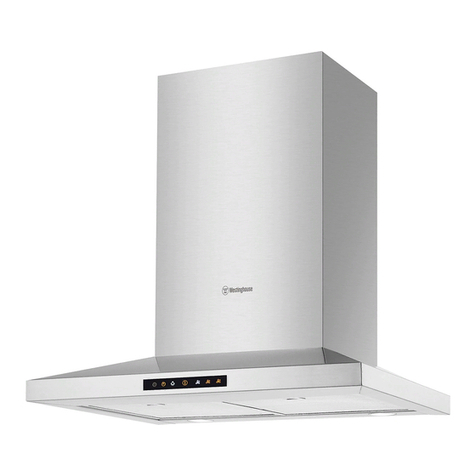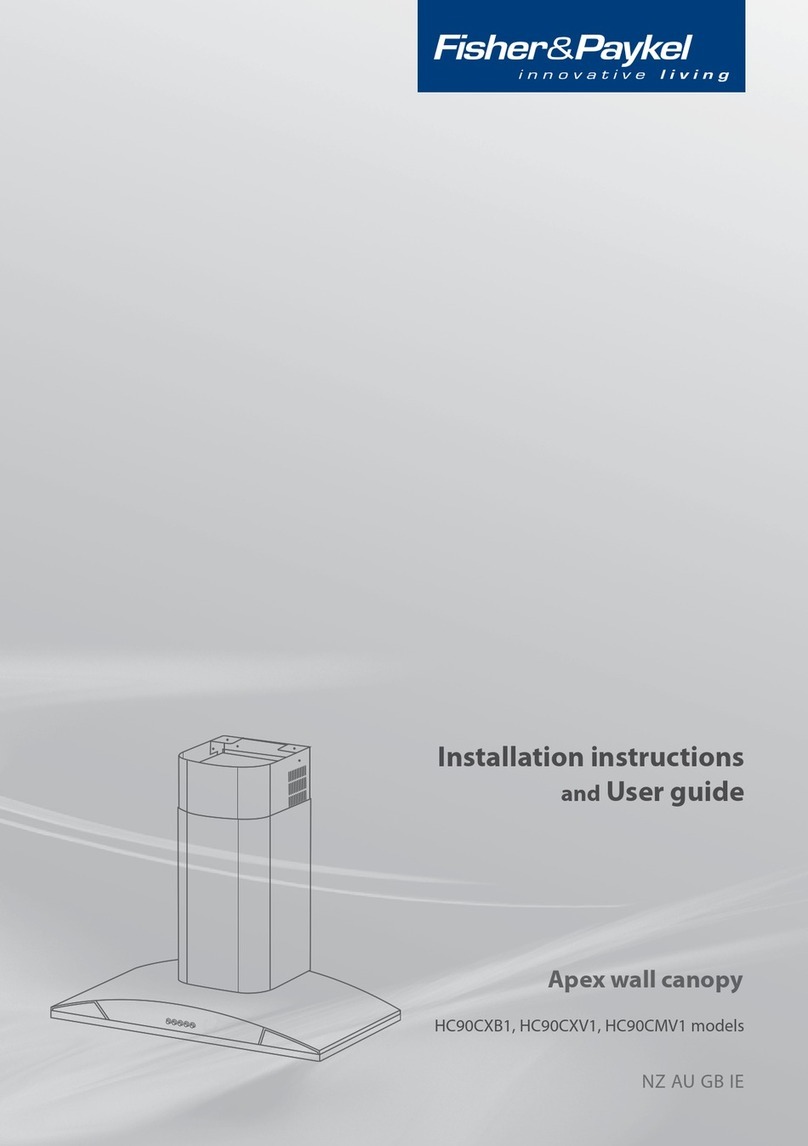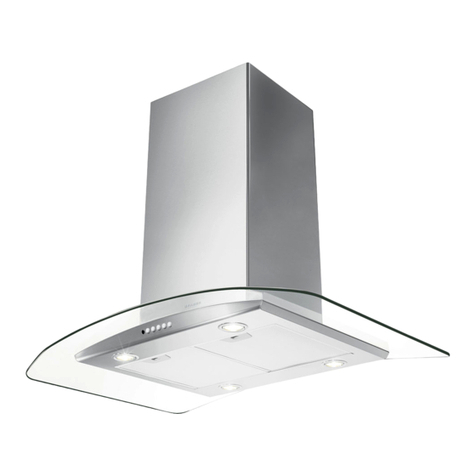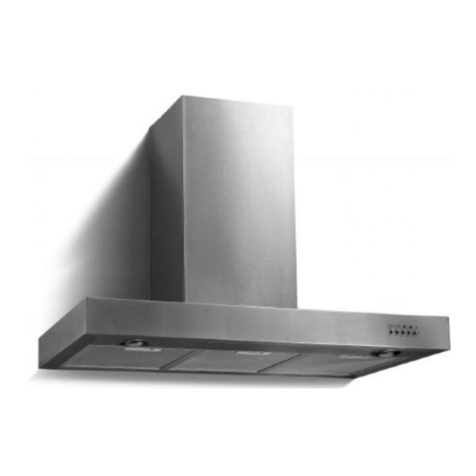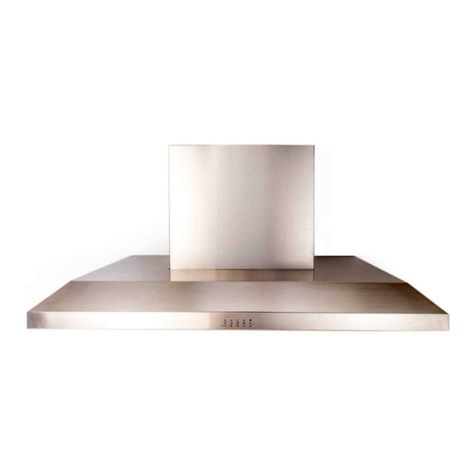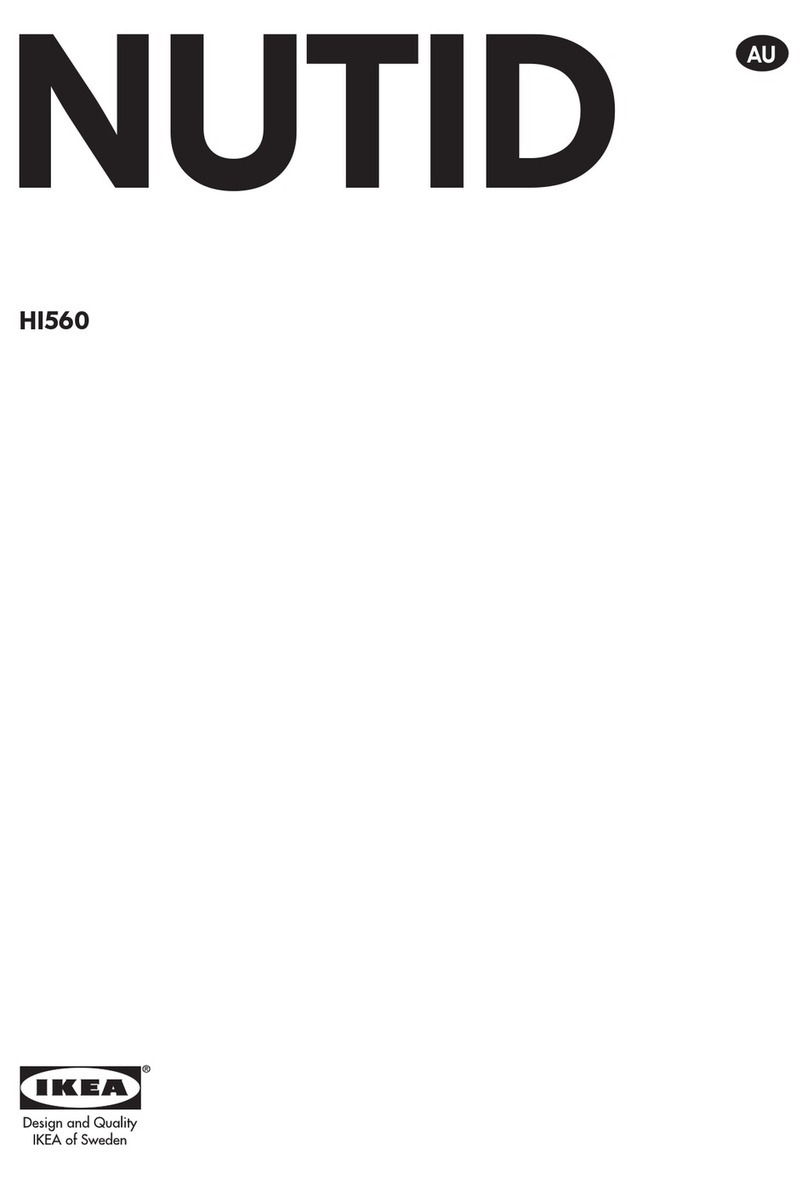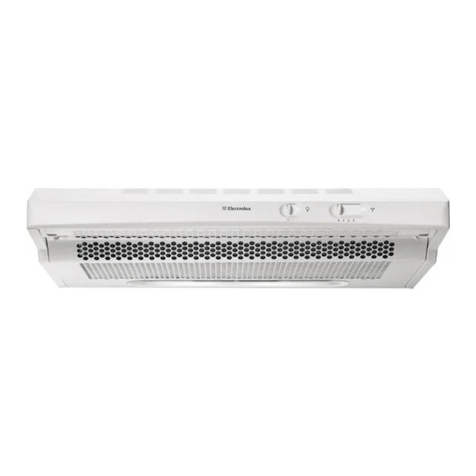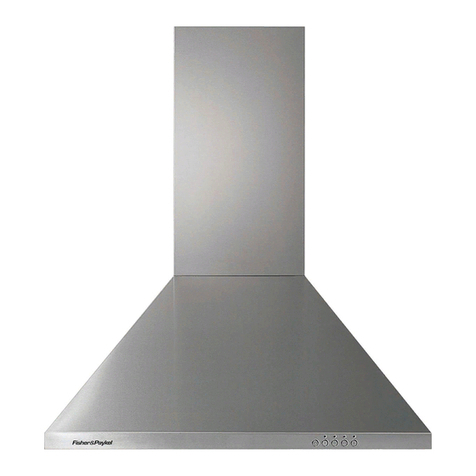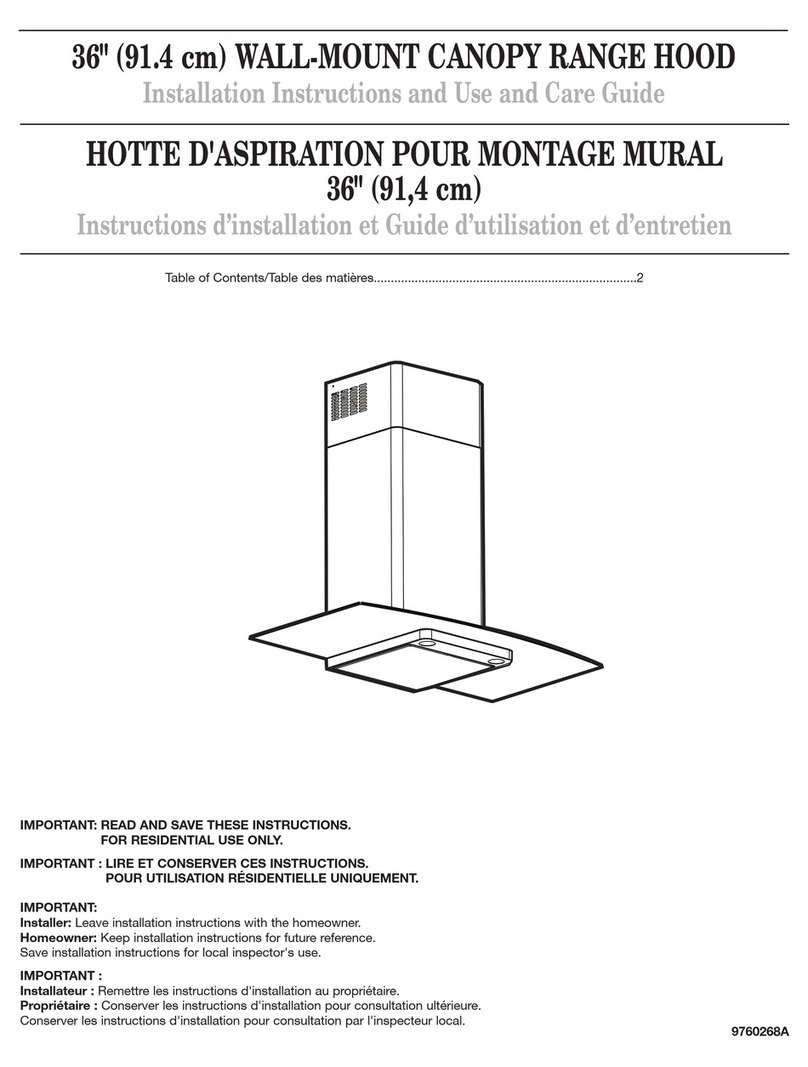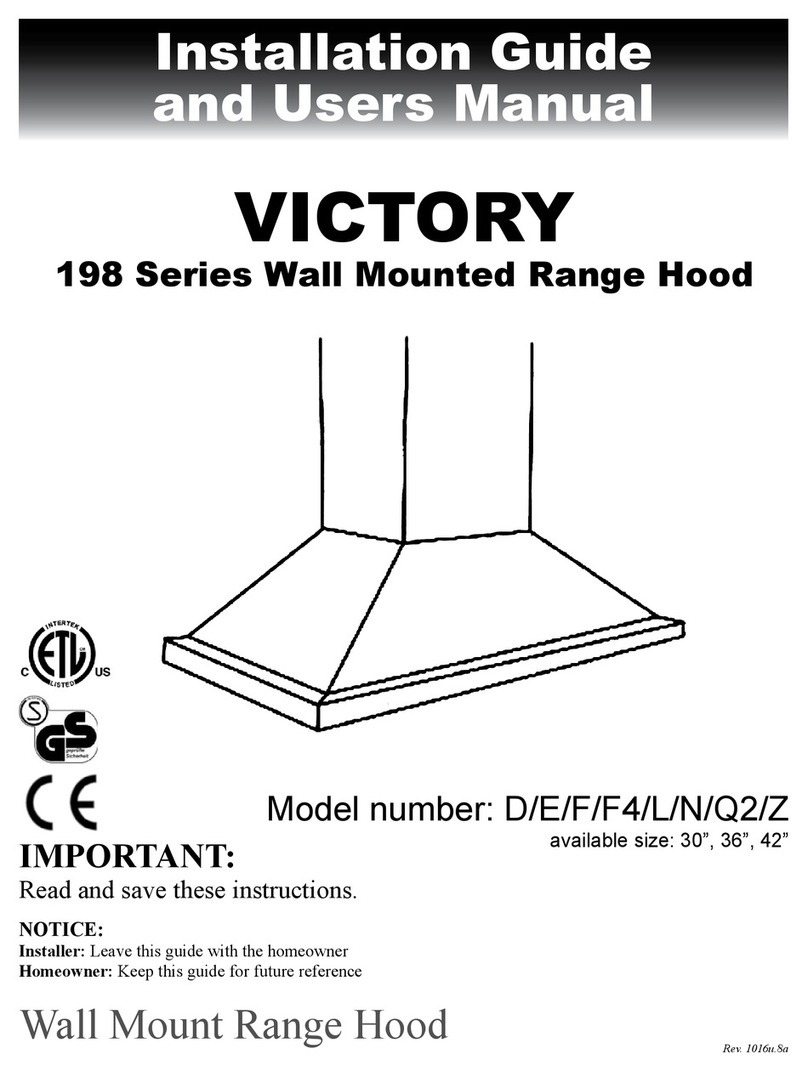
Wall Hung Canopy
Models include W5L09S3, W5S09S3, W5V09S3, W5V12S3, W5R09S2, W5P09S3, W5H09S3, A5M09S3, A5C09S3
and A5N12S3
WARNING
DIMENSIONS ARE ACCURATE AT THE TIME OF PRINTING, PR KITCHEN & WASHROOM SYSTEMS PTY LTD RESERVES
THE RIGHT TO CHANGE SPECIFICATIONS WITHOUT NOTICE. FOR BUILDING PURPOSES THE UNIT SHOULD BE
PROVIDED TO THE CABINET MAKER / BUILDER / KITCHEN DESIGNER FOR EXACT MEASUREMENTS.
STEP 1:
Measure the height of the hood from the base to the top of the mounting hooks.
NOTE:
The height of the underside of the hood body must be a minimum of 600mm above an electric cooktop & 650mm above a
gas cook top and a maximum height of 1200mm. If the instructions of the hob specify a greater distance than the minimum
detailed, this shall be the minimum height for installation. Building codes that stipulate a minimum dimension may vary from
state to state, please check with your local council prior to installation.
STEP 2:
Using a spirit level mark a vertical centre line on the wall where the hood hooks need to be positioned. It is best to centre the
hood unit to the cook top below.
STEP 3:
Mark a horizontal line on the wall for the mounting bracket position. Centre and mark the two (2) xing points to the left and
right of the centre line.
Drill and plug holes with suitable sized wall plugs.
STEP 4:
Fix the wall bracket with two (2) suitable screws into the
wall at the positions marked in step 3 to allow the body of
the hood to be hung on the wall.
STEP 5:
Hang the body of the hood on the wall using the bracket
attached in step 4.
Identify and mark several screw holes located inside the hood.
Remove the hood from the wall and drill and plug holes with
suitable sized wall plugs.
STEP 6:
Replace the hood back on the wall and secure the hood by xing the additional screws inside the hood housing.
STEP 7:
Secure the hood rmly to the wall by tightening the hood hooks.
STEP 8:
Secure the chimney bracket to the wall.
PART 1 : HOOD INSTALLATION GUIDE
Part 1: Hood Installation Guide
Wall Hung Canopy
Models include W5L09S3, W5S09S3, W5V09S3, W5V12S3, W5R09S2, W5P09S3, W5H09S3, A5M09S3, A5C09S3 and A5N12S3
Step 1:
Measure the height of the hood from the base to the top of the mounting hooks.
NOTE: The height of the underside of the hood body must be a minimum of 600mm above an electric cooktop &
650mm above a gas cook top and a maximum height of 1200mm. If the instructions of the hob specify a greater
distance than the minimum detailed, this shall be the minimum height for installation. Building codes that
stipulate a minimum dimenstion may vary from state to state, please check with your local council prior to installation.
Step 2:
Using a spirit level mark a vertical centre line on the wall where the hood hooks need to be positioned. It is best to
centre the hood unit to the cook top below.
Step 3:
Mark a horizontal line on the wall for the mounting bracket position. Centre and mark the two (2) xing points to the
left and right of the centre line. Drill and plug holes with suitable sized wall plugs.
Step 4:
Fix the wall bracket with two (2) suitable screws into the wall at the positions marked in step 3 to allow the body
of the hood to be hung on the wall.
Step 5:
Hang the body of the hood on the wall using the bracket attached in step 4.
Identify and mark several screw holes located inside the hood. Remove the
hood from the wall and drill and plug holes with suitable sized wall plugs.
Step 6:
Replace the hood back on the wall
and secure the hood by xing the
additional screws inside the hood
housing.
Step 7:
Secure the hood rmly to the wall
by tightening the hood hooks.
Step 8:
Secure the chimney bracket to the wall.
Step 9:
Refer to Part 2: Motor Installation Guide.
Step 10:
Place the chimney on the hood and secure to the chimney bracket.
You may need to drill some new holes through the cover and bracket to secure the chimney cover.
Step 11:
Attach the male plug of the rangehood unit to mains power supply. Note to Electricians: Standard 10 Amp
General Power Outlet (GPO) required. Position GPO as close to the hood unit as possible.
WARNING
DIMENSIONS ARE ACCURATE AT THE TIME OF PRINTING BUT HAUS APPLIANCES RESERVES THE RIGHT
TO CHANGE SPECIFICATIONS WITHOUT NOTICE. FOR BUILDING PURPOSES THE UNIT SHOULD BE
PROVIDED TO THE CABINET MAKER / BUILDER / KITCHEN DESIGNER FOR EXACT MEASUREMENTS.
10
1
2
3
5
4
6
7
